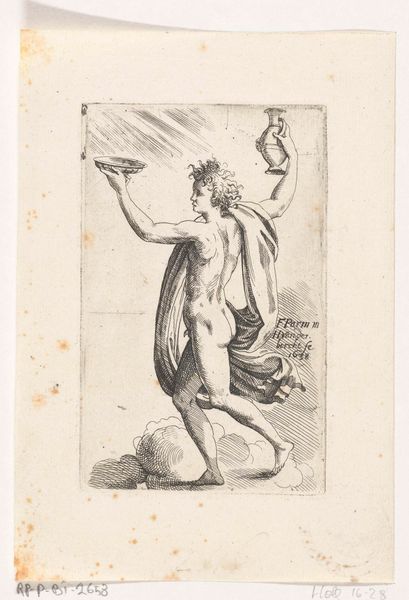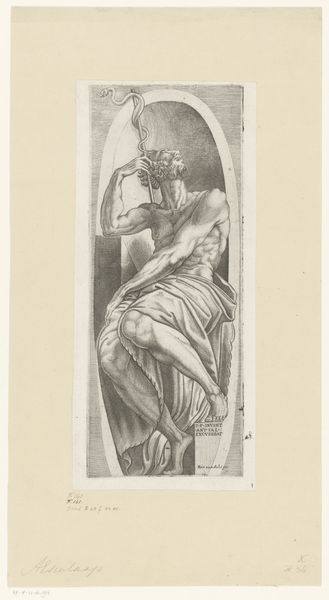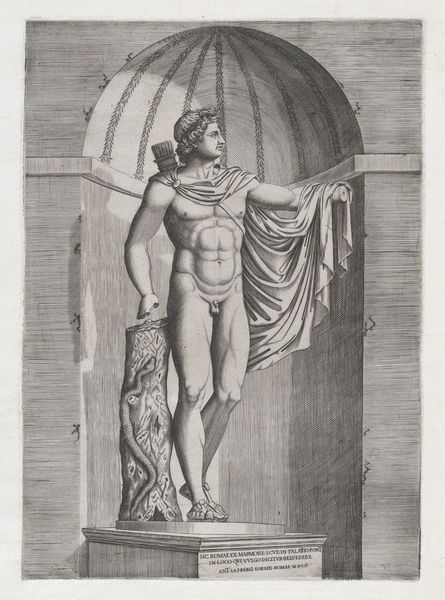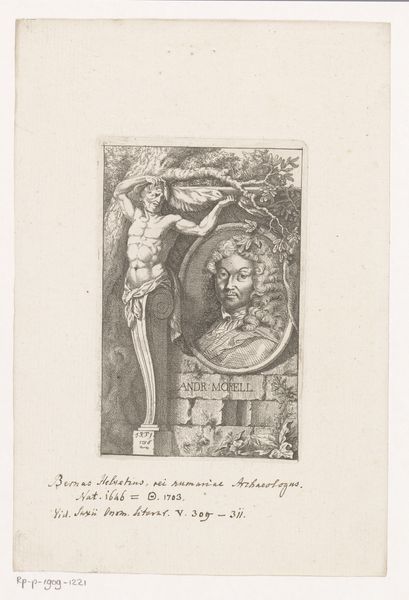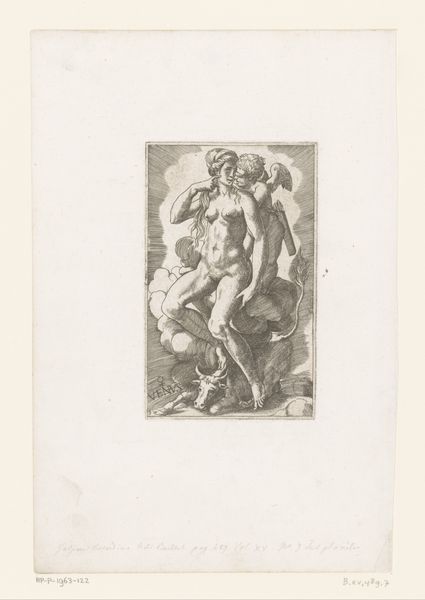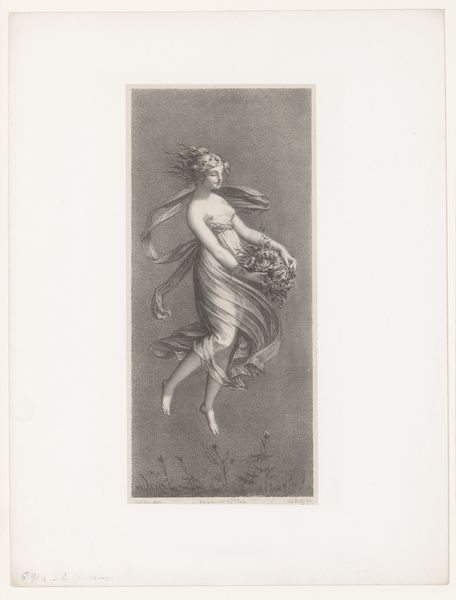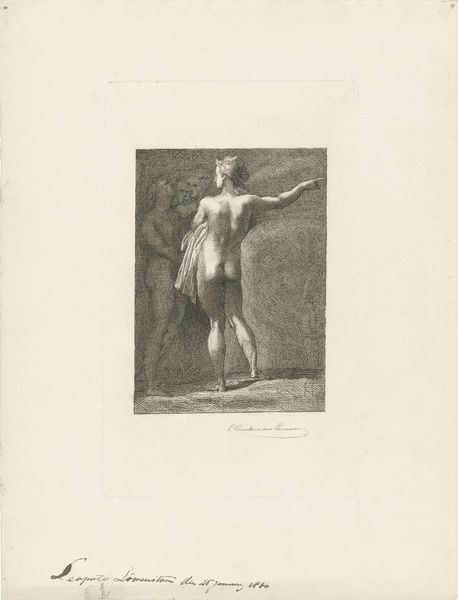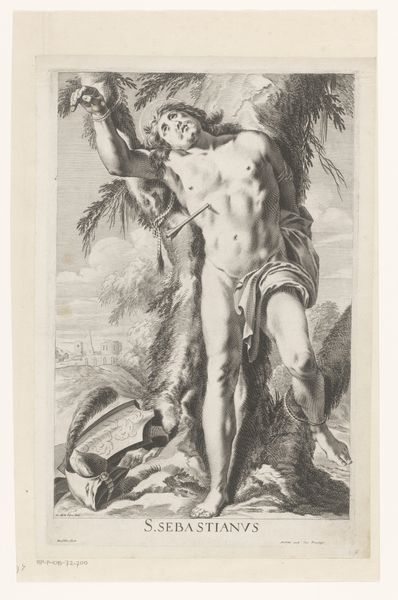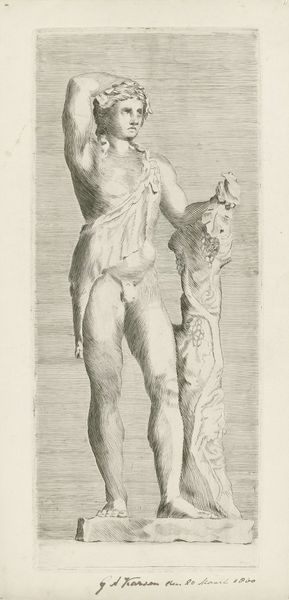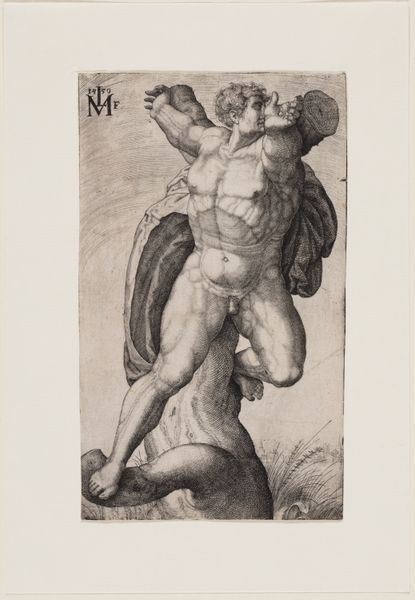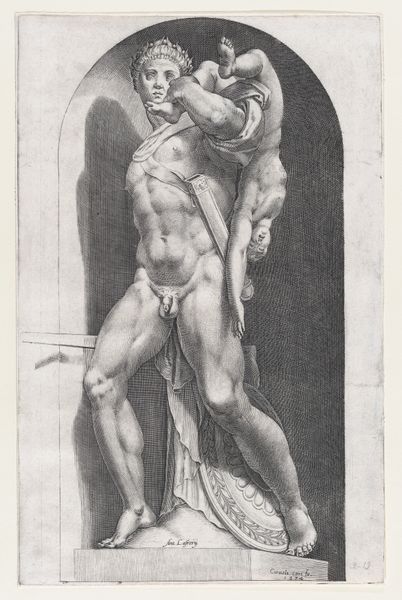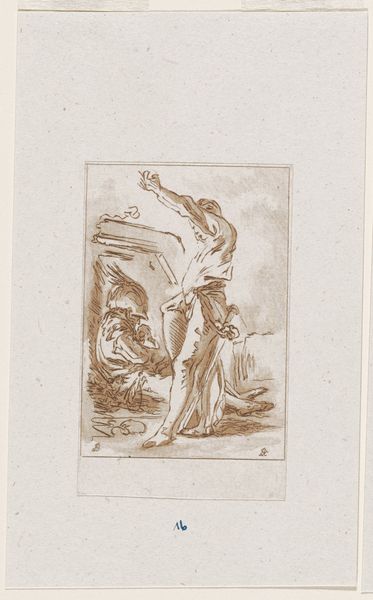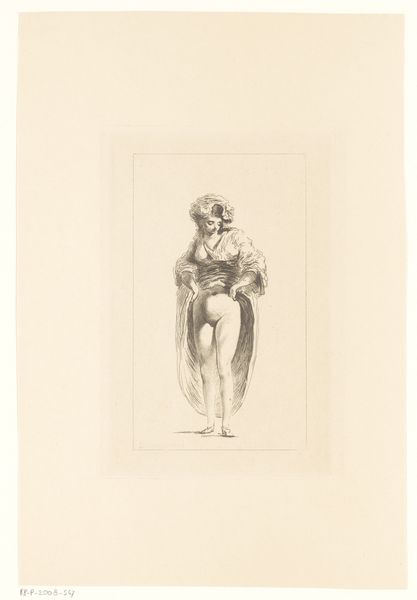
engraving
#
old engraving style
#
figuration
#
11_renaissance
#
history-painting
#
italian-renaissance
#
engraving
Dimensions: height 153 mm, width 87 mm
Copyright: Rijks Museum: Open Domain
Curator: This engraving, entitled "Mercurius met het hoofd van Argus," depicts a scene from classical mythology. It dates back to between 1530 and 1570, placing it firmly within the Renaissance. Editor: My first impression is striking—it has this dark, imposing feel, emphasized by the stark contrast the engraver has employed, wouldn't you say? The subject looks triumphant. Curator: The imagery itself has a complex history. Mercury, or Hermes in Greek mythology, is shown having slain Argus, a giant with a hundred eyes, who was guarding Io. It’s a narrative ripe with themes of deception, duty, and divine intervention. The visual depiction reinforces societal norms by showing male prowess. Editor: I agree, there is definitely something in the contrasts between the sharp lines that sculpt Mercury's body, so idealized in its muscular form, with the crude jagged finish of Argus' severed head. It emphasizes a stark thematic division and hierarchy. Curator: And it's worth considering the role engravings like this played during the Renaissance. They were not merely aesthetic objects, but powerful tools for disseminating classical stories and humanist values to a wider audience, including wealthy citizens who wanted to demonstrate knowledge of classical subject matter. Editor: Absolutely. You see how that contrasts against those meticulously cross-hatched areas which really work to model his physique and imbue him with volume? You see the care and deliberation given to the figure, while Argus' form seems less refined in its texture. Curator: The print would have circulated among collectors and scholars, solidifying interpretations of classical literature and reinforcing a particular vision of masculine power and divine authority. This artwork acts like propaganda for societal assumptions, and thus contributes to cementing a historical worldview. Editor: The rendering gives an air of monumentality, too—one easily loses sight of how small this engraving really is; yet the arrangement is so commanding and immediate. Considering the quality of its form, that seems an easy thing to forget! Curator: Ultimately, an engraving like this provides valuable insights into Renaissance-era values, beliefs, and the power of images to shape perceptions. Editor: It certainly does. And aesthetically, its manipulation of line and texture to convey both strength and a dark drama is wonderfully engaging!
Comments
No comments
Be the first to comment and join the conversation on the ultimate creative platform.
